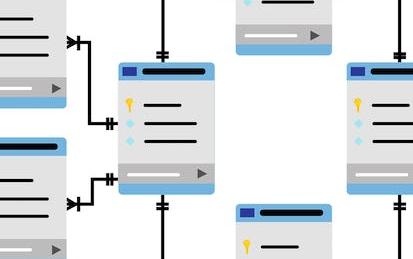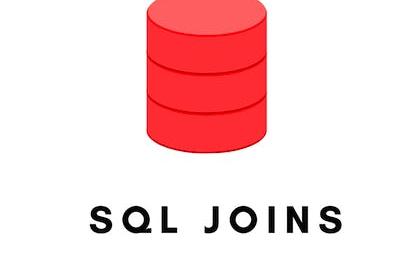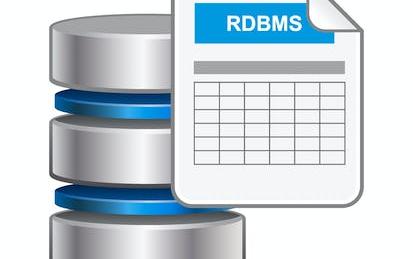

Our Courses

Getting Started with Data Warehousing and BI Analytics
Kickstart your Data Warehousing and Business Intelligence (BI) Analytics journey with this self-paced course. You will learn how to design, deploy, load, manage, and query data warehouses and data marts. You will also work with BI tools to analyze data in these repositories.
-
Course by

-
 Self Paced
Self Paced
-
 17 hours
17 hours
-
 English
English

Validate Data in SQL using MySQL Workbench
By the end of this project, you will validate MySQL data in a MySQL database using SQL Triggers in MySQL Workbench.
-
Course by

-
 Self Paced
Self Paced
-
 3 hours
3 hours
-
 English
English

Cloud SQL for MySQL: Qwik Start
This is a self-paced lab that takes place in the Google Cloud console. Create a Google Cloud SQL MySQL instance and perform SQL operations using Google Cloud Platform Console and mysql client. Watch this short video, Manage PostgreSQL and MySQL Databases Easily with Cloud SQL.
-
Course by

-
 Self Paced
Self Paced
-
 1 hour
1 hour
-
 English
English

Working with MySQL DB instance using AWS RDS
In this 1-hour long project-based course, you will learn how to create, connect & delete a MySQL DB instance using AWS RDS.
-
Course by

-
 Self Paced
Self Paced
-
 2 hours
2 hours
-
 English
English

SQL Joins
In this 1-hour long project-based course, you will learn how to utilize MySQL joins in your queries. By the end of this project, you will create a number of examples that will develop your learning around joins in SQL. This course will enable you to take your beginner knowledge of SQL to the next level by enabling you to utilize joins. Thus, being able to develop more complex queries. This course will provide students with the knowledge behind different joins that are available in MySQL language such as inner join, outer join, and left join.
-
Course by

-
 Self Paced
Self Paced
-
 3 hours
3 hours
-
 English
English

Cloud SQL with Terraform
This is a self-paced lab that takes place in the Google Cloud console. In this hands-on lab you will learn to create Cloud SQL instances with Terraform, then set up the Cloud SQL Proxy, testing the connection with both MySQL and PostgreSQL clients.
-
Course by

-
 Self Paced
Self Paced
-
 1 hour
1 hour
-
 English
English

Scripting with Python and SQL for Data Engineering
In this third course of the Python, Bash and SQL Essentials for Data Engineering Specialization, you will explore techniques to work effectively with Python and SQL. We will go through useful data structures in Python scripting and connect to databases like MySQL. Additionally, you will learn how to use a modern text editor to connect and run SQL queries against a real database, performing operations to load and extract data. Finally, you will use extracted data from websites using scraping techniques.
-
Course by

-
 Self Paced
Self Paced
-
 18 hours
18 hours
-
 English
English

Migrating MySQL User Data When Running Database Migration Service Jobs
This is a self-paced lab that takes place in the Google Cloud console. In this lab, you learn how to migrate MySQL user data when running Database Migration Service jobs. First, you identify the existing MySQL users and update DEFINER to INVOKER for database objects on the source instance. Next, you create and save a Database Migration Service job. Then, before running the migration job, you create the necessary users on the destination database instance.
-
Course by

-
 Self Paced
Self Paced
-
 2 hours
2 hours
-
 English
English

Aggregate Data in SQL using MySQL Workbench
In this project you will use MySQL Workbench to write SQL queries that aggregate (group) data. Incorporating aggregate functions like COUNT, SUM, and AVG, your SQL queries will group and summarize data. Data that is aggregated and presented in a logical format makes it a more valuable decision-making tool for users. Note: This course works best for learners who are based in the North America region. We’re currently working on providing the same experience in other regions.
-
Course by

-
 Self Paced
Self Paced
-
 2 hours
2 hours
-
 English
English

Introduction to Relational Database and SQL
In this guided project, you will get hands-on experience working with a relational database using MySQL Workbench from Oracle.
-
Course by

-
 Self Paced
Self Paced
-
 3 hours
3 hours
-
 English
English

Simple Retrieval Queries in MySQL Workbench
In this beginning-level course you will use MySQL Workbench to write basic SQL queries that retrieve data from tables in a relational database.
-
Course by

-
 Self Paced
Self Paced
-
 3 hours
3 hours
-
 English
English

Relational database systems
Welcome to the specialization course Relational Database Systems. This course will be completed on six weeks, it will be supported with videos and various documents that will allow you to learn in a very simple way how several types of information systems and databases are available to solve different problems and needs of the companies.
-
Course by

-
 Self Paced
Self Paced
-
 15 hours
15 hours
-
 English
English

Introduction to Structured Query Language (SQL)
In this course, you'll walk through installation steps for installing a text editor, installing MAMP or XAMPP (or equivalent) and creating a MySql Database. You'll learn about single table queries and the basic syntax of the SQL language, as well as database design with multiple tables, foreign keys, and the JOIN operation. Lastly, you'll learn to model many-to-many relationships like those needed to represent users, roles, and courses.
-
Course by

-
 Self Paced
Self Paced
-
 16 hours
16 hours
-
 English
English

Introduction to Relational Databases (RDBMS)
Are you ready to dive into the world of data engineering? In this beginner level course, you will gain a solid understanding of how data is stored, processed, and accessed in relational databases (RDBMSes). You will work with different types of databases that are appropriate for various data processing requirements. You will begin this course by being introduced to relational database concepts, as well as several industry standard relational databases, including IBM DB2, MySQL, and PostgreSQL.
-
Course by

-
 Self Paced
Self Paced
-
 19 hours
19 hours
-
 English
English

Building Database Applications in PHP
In this course, we'll look at the object oriented patterns available in PHP. You'll learn how to connect to a MySQL using the Portable Data Objects (PDO) library and issue SQL commands in the the PHP language. We'll also look at how PHP uses cookies and manages session data. You'll learn how PHP avoids double posting data, how flash messages are implemented, and how to use a session to log in users in web applications. We'll then build the first 'complete' application that has multiple screens to Create, Read, Update and Delete (CRUD) our data.
-
Course by

-
 Self Paced
Self Paced
-
 24 hours
24 hours
-
 English
English

Introduction to Databases
In this course, you will be introduced to databases and explore the modern ways in which they are used. Learn to distinguish between different types of database management systems then practice basic creation and data selection with the use of Structured Query Language (SQL) commands.
-
Course by

-
 Self Paced
Self Paced
-
 27 hours
27 hours
-
 English
English

Data Warehouse Concepts, Design, and Data Integration
This is the second course in the Data Warehousing for Business Intelligence specialization. Ideally, the courses should be taken in sequence. In this course, you will learn exciting concepts and skills for designing data warehouses and creating data integration workflows. These are fundamental skills for data warehouse developers and administrators. You will have hands-on experience for data warehouse design and use open source products for manipulating pivot tables and creating data integration workflows.
-
Course by

-
 Self Paced
Self Paced
-
 62 hours
62 hours
-
 English
English

Database Management Essentials
Database Management Essentials provides the foundation you need for a career in database development, data warehousing, or business intelligence, as well as for the entire Data Warehousing for Business Intelligence specialization. In this course, you will create relational databases, write SQL statements to extract information to satisfy business reporting requests, create entity relationship diagrams (ERDs) to design databases, and analyze table designs for excessive redundancy.
-
Course by

-
 Self Paced
Self Paced
-
 123 hours
123 hours
-
 English
English
Managing Big Data with MySQL
This course is an introduction to how to use relational databases in business analysis. You will learn how relational databases work, and how to use entity-relationship diagrams to display the structure of the data held within them. This knowledge will help you understand how data needs to be collected in business contexts, and help you identify features you want to consider if you are involved in implementing new data collection efforts.
-
Course by

-
 Self Paced
Self Paced
-
 32 hours
32 hours
-
 English
English
Increasing Real Estate Management Profits: Harnessing Data Analytics
In this final course you will complete a Capstone Project using data analysis to recommend a method for improving profits for your company, Watershed Property Management, Inc. Watershed is responsible for managing thousands of residential rental properties throughout the United States. Your job is to persuade Watershed’s management team to pursue a new strategy for managing its properties that will increase their profits.
-
Course by

-
 Self Paced
Self Paced
-
 23 hours
23 hours
-
 English
English



